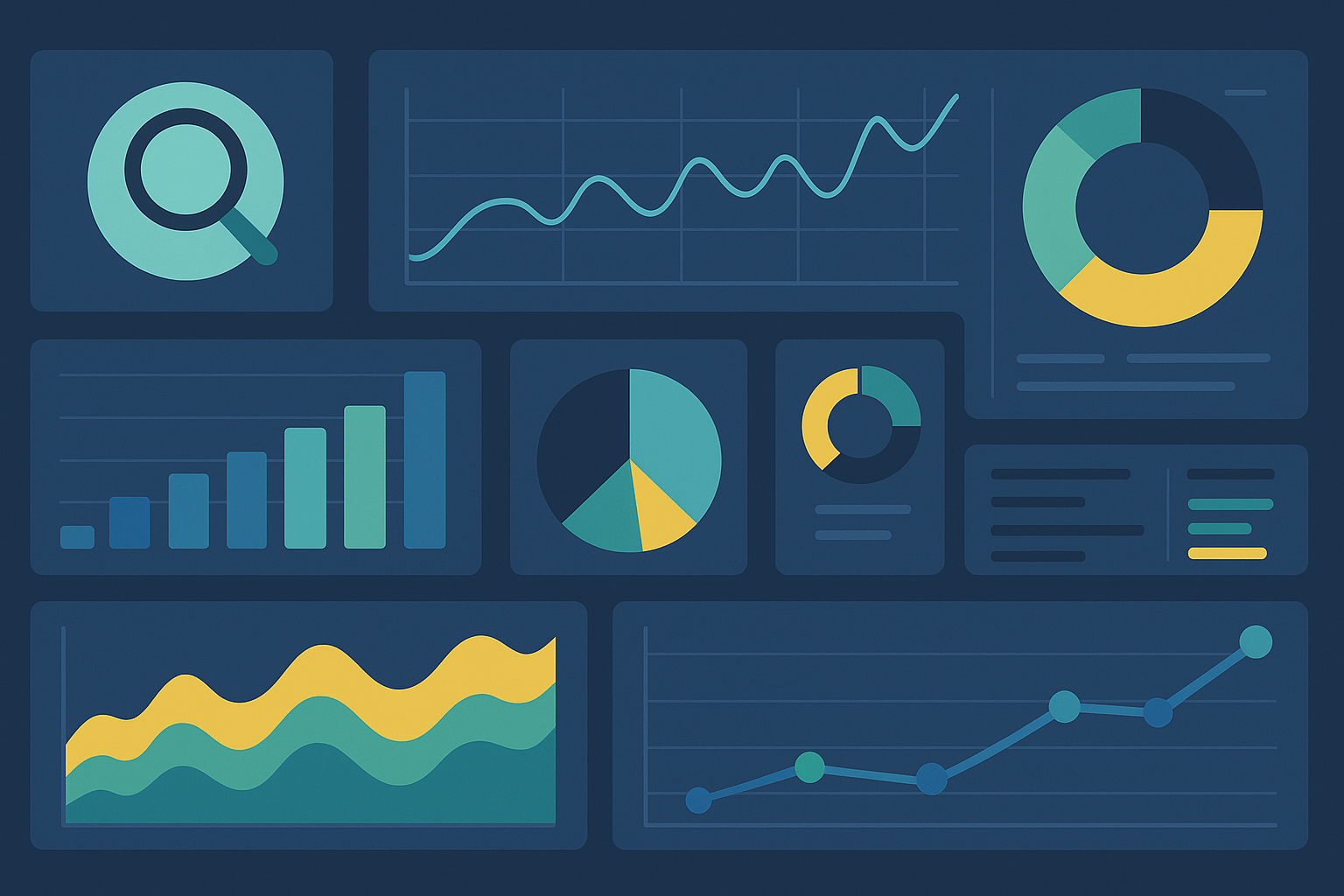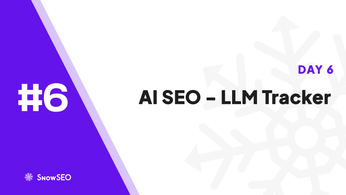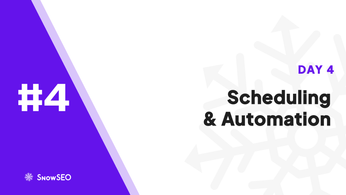
The Ultimate Guide to SEO Performance Metrics
Table of Contents
Unlock the power of precise tracking in your SEO campaigns. As search landscapes evolve, many SEO professionals struggle with accurately measuring performance, often relying on outdated indicators that fail to reflect real-time impact. Inconsistent data collection methods and a lack of unified dashboards only compound the challenge, leaving teams guessing rather than optimizing.
This guide dives deep into advanced techniques for tracking SEO performance metrics effectively. You will discover how to integrate real-time analytics, harness actionable KPIs and align your reporting with overarching business objectives. Backed by insights from industry leaders and seasoned practitioners, this ultimate guide equips you to transform raw data into strategic decisions that drive sustained growth.
Expert insights from industry leaders ensure you’re tapping into proven strategies rather than untested theories. Through practical use cases-ranging from leveraging Google Analytics for granular behavior insights to using SEMrush for competitive benchmarking-you’ll build a comprehensive dashboard that speaks the language of C-suite stakeholders. Armed with this roadmap, you’ll stop chasing vanity metrics and start driving measurable ROI with every optimization.
Foundations of SEO Performance Metrics
Understanding SEO performance metrics starts with recognizing their role in guiding search visibility, user engagement, and business outcomes. These metrics quantify how well a site ranks, attracts visitors, and retains attention-transforming raw data into actionable insights. For marketers and analysts, mastering these fundamentals creates a solid platform for advanced optimization and strategic decision-making.
The Evolution of SEO Metrics
SEO metrics have shifted dramatically over the past three decades, reflecting search engines’ growing sophistication and users’ rising expectations. Early efforts measured simple on-page factors; today’s benchmarks demand a holistic view of content relevance, authority, and experience.
| Era | Primary Metrics | Focus |
|---|---|---|
| Late 1990s | Keyword density, HTML tags | On-page optimization |
| Early 2000s | Inbound links, PageRank | Authority through link equity |
| Mid-2000s to 2019 | Click-through rate, bounce rate | User behavior and site usability |
| 2020 onward | Core Web Vitals (LCP, FID, CLS) | Page experience and technical performance |
Core Web Vitals represent Google’s formalization of page-experience signals, elevating metrics like Largest Contentful Paint and First Input Delay into ranking considerations.
By tracing this timeline, we see a clear progression: from easily manipulated on-page tactics to robust, user-centric measures. Modern SEO performance metrics integrate all these dimensions-technical health, content quality, and visitor satisfaction-into a unified dashboard.

Key Performance Indicators in SEO
Monitoring SEO key performance indicators ensures your strategy stays on track and delivers measurable results. These metrics reveal how effectively your site attracts organic visitors, engages them, and converts them into customers. By focusing on the right SEO KPIs, you can pinpoint opportunities, troubleshoot underperforming pages, and align your efforts with overarching business goals.
Tip: Prioritize metrics that align with your specific objectives-whether it’s boosting organic traffic, improving user experience, or driving conversions.
Common SEO KPIs
- Organic Traffic Volume
- Measures: Total sessions from unpaid search results
- Why it matters: Indicates overall visibility and reach
- Click-Through Rate (CTR)
- Measures: Ratio of impressions to clicks in SERPs
- Why it matters: Reflects effectiveness of titles and meta descriptions
- Keyword Ranking Distribution
- Measures: Share of targeted keywords appearing in top positions
- Why it matters: Tracks competitiveness across high-value queries
- Conversion Rate
- Measures: Percentage of organic visitors completing desired actions
- Why it matters: Connects traffic quality to business outcomes
- Bounce Rate & Dwell Time
- Measures: Immediate exits versus time spent on-page
- Why it matters: Gauges content relevance and engagement
- Backlink Quality & Referring Domains
- Measures: Authority and diversity of inbound links
- Why it matters: Influences domain authority and ranking potential
- Page Experience Metrics
- Measures: Core Web Vitals like load speed and visual stability
- Why it matters: Directly impacts rankings and user satisfaction
- Mobile Usability
- Measures: Pass rate of mobile-friendly assessments
- Why it matters: Essential for ranking in mobile-first indexing
- Indexing Health
- Measures: Indexed pages versus submitted URLs, crawl errors
- Why it matters: Ensures search engines can access and understand your site
- Local Visibility Metrics
- Measures: Impressions and rankings in local packs and “near me” searches
- Why it matters: Crucial for businesses targeting specific geographies
| KPI | What It Measures | Strategic Importance |
|---|---|---|
| Organic Traffic Volume | Sessions from organic search | Visibility and audience growth |
| Click-Through Rate (CTR) | Clicks per SERP impression | SERP attractiveness and messaging effectiveness |
| Conversion Rate | Goal completions divided by sessions | ROI and lead generation |
| Backlink Quality | Authority and number of referring domains | Domain strength and trustworthiness |
| Core Web Vitals | Load performance, interactivity, visual stability | User experience and ranking factor |
Key Insight: Balancing quantity (traffic volume) with quality metrics (conversion rate, engagement) provides a holistic view of SEO performance.
Advanced Tracking Techniques and Tools
In an era where data velocity can make or break your SEO strategy, tapping into advanced tracking methods and cutting-edge tools is nonnegotiable. By shifting from periodic audits to continuous monitoring, marketers gain instant insights and can pivot in real time-boosting rankings and traffic with surgical precision.
Real-Time Tracking Systems
Real-time tracking systems ingest, process, and visualize SEO data within seconds, enabling teams to detect ranking fluctuations, crawl errors, and engagement shifts as they happen.
Key Insight: Implementing a real-time pipeline transforms reactive reporting into proactive optimization.
- Unified Data Streams
- Collect clickstream, crawl, and keyword data through an API-first architecture.
- Leverage platforms like Apache Kafka or Flink for event-driven ingestion.
- Predictive Analytics Integration
- Apply machine learning to forecast ranking movements and traffic dips.
- Trigger alerts when threshold breaches indicate potential issues.
- Instant Dashboards
- Visualize metrics-keyword positions, crawl diagnostics, Core Web Vitals-in a single pane of glass.
- Customize dashboards to your top KPIs, updating every few seconds.
| Component | Purpose | Example Tool or Framework |
|---|---|---|
| Data Ingestion | Stream click and crawl events | Apache Kafka, AWS Kinesis |
| Real-Time Processing | Transform and enrich incoming events | Apache Flink, Google Cloud Dataflow |
| Visualization | Display live metrics and alerts | Grafana, Google Data Studio |
| Alerting & Automation | Notify teams or trigger automated workflows | PagerDuty, Zapier integrations |
| Predictive Modeling | Forecast SEO performance trends | SEMrush API, custom ML models |
According to analysis of large-scale public dashboards like those on analytics.usa.gov – Federal Website Analytics, organizations that embrace continuous tracking cut reaction times by up to 70%. Academic research from MIT CSAIL on real-time analytics techniques further underscores the shift from batch to event-driven monitoring for web performance.
Integrating SEO Performance with Business Goals
Aligning SEO business integration with strategic objectives transforms organic traffic gains into measurable revenue and long-term growth. Start by mapping core SEO metrics directly to your company’s financial and operational targets.
Measuring Business Impact
To quantify the value of SEO initiatives, focus on a multi-dimensional framework that ties each performance indicator to a specific business outcome:
- Organic Sessions → Market Reach
Tracks volume increases against quarterly acquisition goals. - Click-Through Rate (CTR) → Content Effectiveness
Measures how well titles and meta descriptions drive qualified visits. - Search Visibility Index → Brand Awareness
Compares share of voice across target keywords. - Revenue Attribution → ROI
Uses first-click, last-click, and multi-touch models to allocate sales value.
Key Insight: Predictive analytics and cohort analysis let you forecast SEO-driven revenue growth and adjust budgets dynamically.
| SEO Metric | Business KPI | Measurement Tool |
|---|---|---|
| Organic Sessions | New Customer Acquisition | Google Analytics 4 |
| CTR | Lead Generation Rate | SEMrush Position Tracking |
| Visibility Index | Share of Voice Percentage | SEO Service Manual |
| Revenue Attribution | Return on Investment | Custom Dashboard |

- Establish baseline metrics aligned with quarterly and annual revenue targets.
- Build real-time dashboards combining SEO and sales data for executive reporting.
- Conduct monthly reviews to recalibrate keyword strategies based on performance trends.
- Use cohort analysis to reveal how visitor segments behave over time.
- Leverage machine-learning–driven forecasting for budget planning and risk mitigation.
By integrating these SEO performance metrics with overarching business goals, marketing teams can make data-driven decisions that directly impact the bottom line, ensuring every optimization contributes to tangible growth.
Tracking the right SEO metrics isn’t just theory-it’s what separates top performers from the pack. SnowSEO brings these insights to life by automating your entire SEO pipeline. With real-time dashboards, weekly GEO and performance reports, and AI-driven competitor monitoring, you’ll never miss a trend or opportunity. Implement these advanced metrics tracking tactics today and transform your SEO results. Sign up for a free trial at https://snowseo.com to see exactly where your strategy shines-and where it needs fine-tuning. Start by connecting your CMS, defining your core KPIs, and letting SnowSEO’s hyper-personalized content generator fill any gaps, so you can waste no time on manual data wrangling. Our 24x7 AI-powered SEO expert experience means you’ll have actionable recommendations around the clock, ensuring your campaigns adapt faster than algorithm updates. Ready to accelerate organic growth without juggling multiple tools? Visit SnowSEO now to set up your account, schedule your onboarding call, and watch your search rankings climb. Take control of your metrics, streamline your workflow, and achieve sustained growth with SnowSEO’s all-in-one platform.
Frequently Asked Questions
Q1: What are the most crucial SEO performance metrics to track?
The most vital SEO performance metrics include organic traffic volume, keyword ranking positions, click-through rate (CTR), bounce rate, and conversion rate. Organic traffic reveals overall visibility, while CTR measures how compelling your meta titles and descriptions are. Monitoring bounce rate helps identify user experience issues on landing pages. Finally, conversion rate ties SEO efforts directly to revenue, ensuring your strategy aligns with business goals.
Q2: How often should I review SEO performance metrics?
You should review key SEO metrics weekly for tactical adjustments and monthly for strategic insights. Weekly checks help you spot sudden drops in traffic or ranking anomalies, allowing rapid fixes. Monthly reviews provide broader trends, showing whether long-term initiatives like content refreshes or backlink campaigns are moving the needle. Use dashboards in tools like Google Analytics and SEMrush to streamline reporting.
Q3: Can small businesses benefit from advanced SEO metrics?
Absolutely. Small businesses gain a competitive edge by leveraging advanced metrics-such as page speed insights, user behavior flow, and real-time position tracking-to refine content and technical SEO. Detailed analytics highlight niche opportunities and underperforming pages, letting small teams prioritize high-impact improvements. Integrating these metrics with sales data also reveals the true ROI of SEO investments.
Conclusion
Summing up The Ultimate Guide to SEO Performance Metrics, it’s clear that a robust strategy rests on three pillars:
- Key Metrics Every SEO Should Track
- Behavioral signals like click-through rate and dwell time
- Technical benchmarks such as page load speed and mobile-friendliness (W3C findings)
- Conversion metrics including goal completions and assisted conversions (Web Analytics guidance)
Important: Innovations in real-time SEO tracking-think automated anomaly detection and live dashboard alerts-empower teams to react instantly to performance shifts.
Aligning SEO efforts with overarching business objectives transforms raw data into actionable insights. When search performance is tied to revenue goals, every click carries measurable impact and ROI.
Implement these advanced metrics tracking tactics today and transform your SEO results.
Next Steps:
- Explore specialized tools like Google Analytics 4’s real-time reports.
- Enroll in training resources on SEMrush Academy or Digital.gov’s analytics tutorials.
- Build a customized dashboard to monitor behavioral, technical, and conversion metrics in one view.





